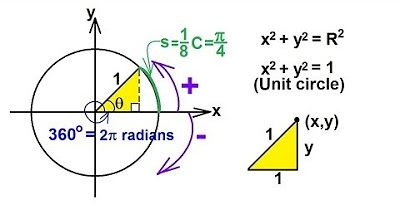Unit 4.8 - Introduction to Acid-Base Reactions
Summary
TLDRIn this video, the instructor introduces Unit 4.8 on acid-base reactions, revisiting the Bronsted-Lowry theory. The video covers key concepts such as acids donating hydrogen ions and bases accepting them, along with definitions of conjugate acids and bases. Through examples, the instructor explains how to identify the acid, base, conjugate acid, and conjugate base in a reaction. Emphasis is placed on understanding these reactions for multiple-choice and free-response questions, with a promise of more detailed exploration later in the course.
Takeaways
- 😀 Acid-base reactions are a central topic in chemistry, and while more detail will be covered later, today’s focus is on introducing the key concepts.
- 😀 A Bronsted-Lowry acid is defined as a substance that donates a hydrogen ion (H+), while a Bronsted-Lowry base is a substance that accepts the hydrogen ion.
- 😀 A hydrogen ion (H+) is often referred to as a proton, as it consists of just a single proton.
- 😀 In an acid-base reaction, the acid donates a hydrogen ion, and the base accepts it.
- 😀 The concept of conjugates is introduced: after an acid donates its hydrogen ion, the remaining part is called the conjugate base.
- 😀 The base, after accepting the hydrogen ion, becomes the conjugate acid.
- 😀 The conjugate acid is the species formed when a base gains a hydrogen ion, and the conjugate base is what remains after an acid loses its hydrogen ion.
- 😀 In reactions, the order of reactants (acid first or base first) doesn’t matter. The key is that acids and bases are always on the reactant side, while conjugate acids and bases are on the product side.
- 😀 Conjugate pairs, such as acid/conjugate base or base/conjugate acid, are a key component in understanding acid-base reactions.
- 😀 The video includes examples of acid-base reactions where you are asked to identify the acid, base, conjugate acid, and conjugate base. Practice with these examples will reinforce the understanding of these concepts.
Q & A
What is the main topic of this lesson?
-The main topic of this lesson is an introduction to acid-base reactions, specifically focusing on the Bronsted-Lowry theory of acids and bases.
What defines a Bronsted-Lowry acid?
-A Bronsted-Lowry acid is a compound that donates a hydrogen ion (H+), also known as a proton, during a chemical reaction.
What defines a Bronsted-Lowry base?
-A Bronsted-Lowry base is a compound that accepts a hydrogen ion (H+), also referred to as a proton, during a chemical reaction.
Why is a hydrogen ion also called a proton?
-A hydrogen ion (H+) is sometimes called a proton because it consists of a single proton and no electrons, making it essentially just a proton.
In the reaction example given in the script (HA + H2O -> H3O+ + A-), which is the acid and which is the base?
-In this reaction, HA is the acid because it donates a hydrogen ion (H+), while H2O is the base because it accepts the hydrogen ion to form H3O+.
What is the conjugate base in the reaction HA + H2O -> H3O+ + A-?
-The conjugate base is A-, which is what remains after the acid (HA) has donated its hydrogen ion.
What is the conjugate acid in the reaction HA + H2O -> H3O+ + A-?
-The conjugate acid is H3O+ (hydronium ion), which forms when H2O accepts the hydrogen ion from HA.
Can the order of reactants in an acid-base reaction affect the identification of acids and bases?
-No, the order of reactants does not affect the identification of acids and bases. The acid and base are determined by their role in donating or accepting hydrogen ions, not by their position in the equation.
What is the purpose of the term 'conjugate' in conjugate acid and conjugate base?
-The term 'conjugate' refers to what a compound becomes after it either donates or accepts a hydrogen ion. The conjugate base is what remains of the acid after it donates H+, and the conjugate acid is what forms when a base accepts H+.
In the example where OH- accepts a proton to become H2O, what role does OH- play in the reaction?
-OH- acts as the base in the reaction because it accepts a proton (H+) to form H2O. The H2O formed is the conjugate acid.
Outlines

This section is available to paid users only. Please upgrade to access this part.
Upgrade NowMindmap

This section is available to paid users only. Please upgrade to access this part.
Upgrade NowKeywords

This section is available to paid users only. Please upgrade to access this part.
Upgrade NowHighlights

This section is available to paid users only. Please upgrade to access this part.
Upgrade NowTranscripts

This section is available to paid users only. Please upgrade to access this part.
Upgrade NowBrowse More Related Video

Gerakan Dirigen / Conducting 2/4 3/4 4/4 5/4 dan 6/4

Unit 2 What Happened to the Sea Animals? | Bahasa Inggris kelas 8 SMP Chapter 4 | Kurikulum Merdeka

TRIGONOMETRY 1 (PRECALCULUS) (1 of 54) What Is The Unit Circle?

Coupling Capacitor (Unit 4 Analysis of BJT circuits & small signal Amplifier) Basic Electronics

noc19-cy16 Lecture 06-Solid state Chemistry-Week 2 Lecture-1 Unit Cell

Strength of Materials - Stress
5.0 / 5 (0 votes)